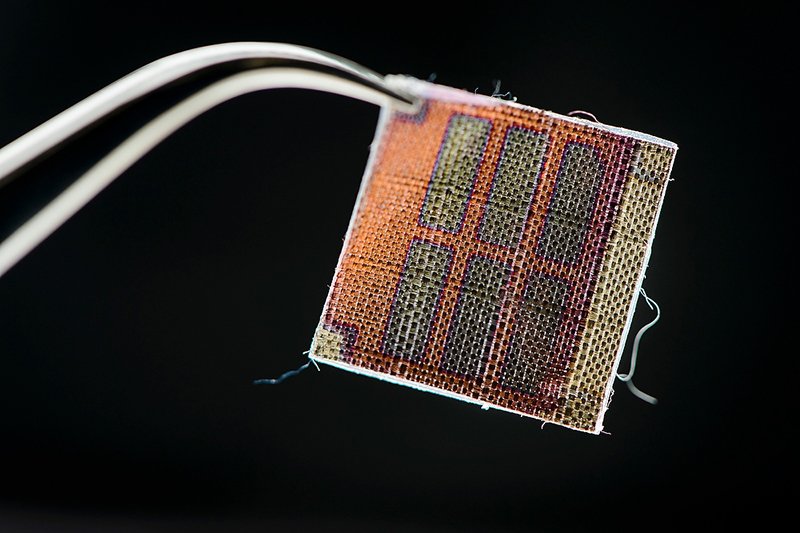Two academics have teamed up to work on a project that could see clothes, tents, handbags and any other material being used as a solar charging product. Marianne Fairbanks is a fabric designer and professor at the school of human ecology at the University of Wisconsin-Madison, and Trisha Andrew is an assistant professor of organic chemistry at the same university. Together they want to change the way in which solar panels are used by integrating them into materials.
Today’s devices that claim to be wearable, such as the Fitbit or Apple watch, aren’t wearable devices if you break it down. They just have a printed circuit board that holds an electronic circuit. This allows you to wear the device but is only something that is patched onto another material.
–
The way in with the pair have made their solar cells is by using one layer of fabric, but four coats of different polymers. While the first coat is called Poly(3,4-ethylenedioxythiophene) or “PEDOT” and increases the conductivity of the fabric, the other three coats are simply semi-conducting dyes that absorb light within the cell. To ensure their coatings were all distributed evenly, they used CVD (Chemical Vapor Deposition).
Various materials were tested until they found one they were happy with. Andrew commented, “The conductivity of the PEDOT was completely determined by the underlying textiles. If we had a porous textile, we got conductivity higher than the copper. If we had a very fuzzy textile, like fuzzy cotton jersey or wool felt, or very tightly woven textiles, then the conductivity of the PEDOT was really bad.”
–
The first item created through this process was a glove made from pineapple fiber which absorbed the heat, and cotton which trapped it between the layers. However, they are now working on coating every individual fiber with PEDOT so they can weave them together to form a working circuit.
More News To Read











